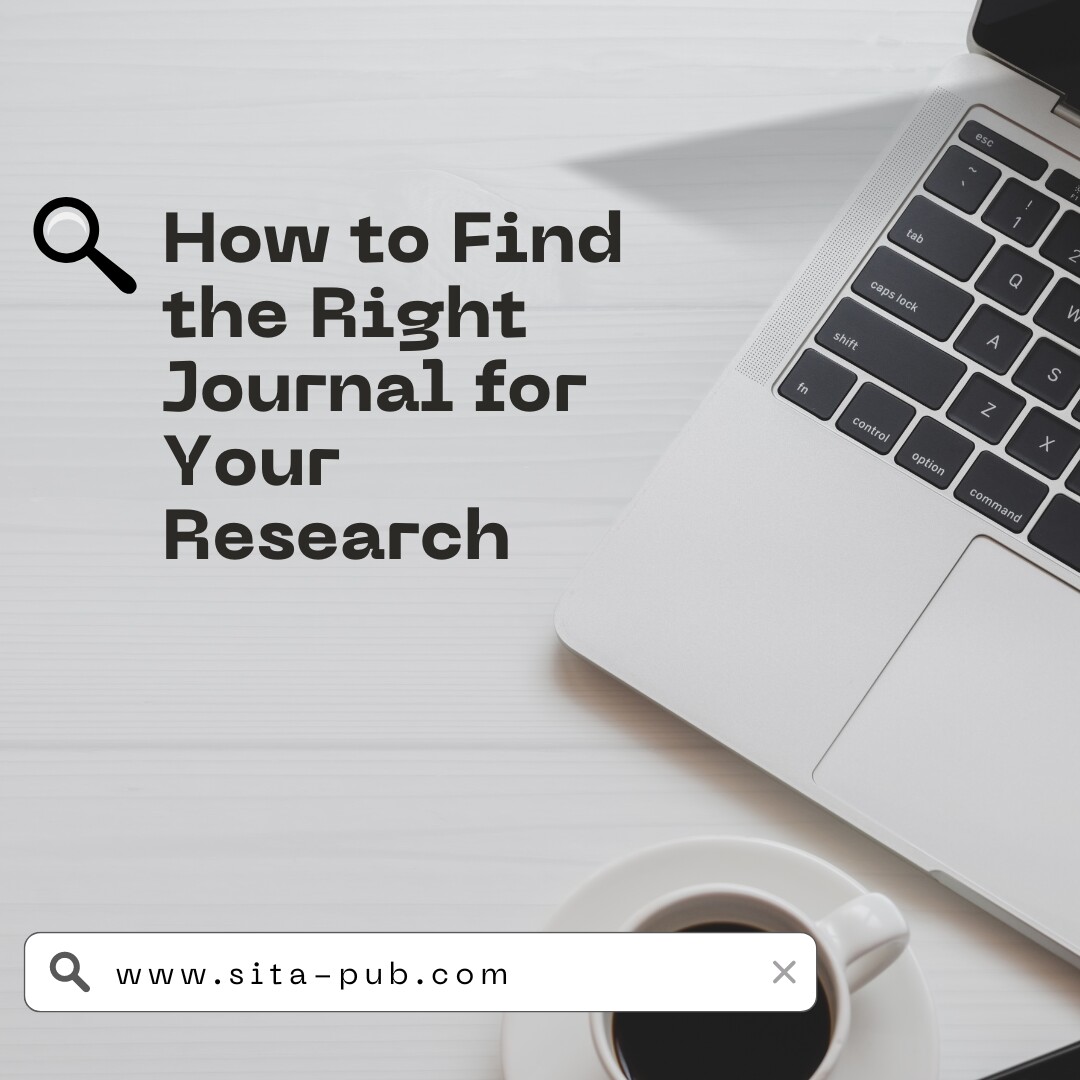How to Find the Right Journal for Your Research


Selecting the right journal for academic publishing is crucial for ensuring your work reaches the appropriate audience and achieves maximum impact. Here are key steps to help you with journal selection and enhance your research publication process.
Before you begin your search, clarify the core focus of your research. Consider the following questions:
What is the primary subject area of your research?
What are the key themes or topics addressed in your work?
Who is the intended audience (academics, practitioners, policymakers)?

Once you have a clear understanding of your research, explore the Aims and Scope sections of potential journals. This information provides insight into:
The types of articles the journal publishes (original research, reviews, case studies).
The specific topics or themes the journal emphasizes.
The target audience of the journal.

Consider the journal's reputation in your field. Factors to evaluate include:
Definition: The Impact Factor measures the average number of citations received by articles published in a journal over a specific period (usually two years).
Limitation: It can be influenced by a few highly cited papers and does not account for the quality or relevance of the citations.
Definition: This metric reflects the average influence of a journal's articles over the first five years after publication, adjusted for citation patterns.
Limitation: It may not be applicable for newer journals that have not had enough time to establish a citation base.
Definition: The SJR indicator measures the scientific influence of journals by considering both the number of citations received and the prestige of the journals where such citations come from.
Limitation: It can be skewed by a few influential journals in a field, and not all fields have equal citation practices.
Definition: SNIP measures the contextual citation impact by weighting citations based on the total number of citations in a subject field.
Limitation: It may not accurately reflect the impact of interdisciplinary research, where citation practices vary widely.
Definition: This metric evaluates the overall influence of a journal based on the number of citations received, adjusting for the quality of the citing journals.
Limitation: It can be affected by the publication practices of certain fields, where citation volume is higher.
Definition: Altmetrics track the online attention and engagement a research article receives, including social media mentions, news articles, and policy documents.
Limitation: They may not reflect academic impact and can be influenced by factors unrelated to research quality.
Definition: Provides comprehensive citation data for journals, including Impact Factor and other metrics.
Limitation: Access may require a subscription to specific databases.
Definition: Offers a comprehensive view of research impact by tracking usage, mentions, captures, and social media interactions.
Limitation: Requires the journal to be indexed in the PlumX database.
Definition: Similar to the standard Impact Factor but measures citation impact over a five-year period, providing a longer view of a journal's influence.
Limitation: It may not be available for all journals.
Definition: Indicates the median age of the articles that were cited in a given year, reflecting how long articles remain relevant.
Limitation: Can vary significantly across different fields.
Review past issues of the journal to assess the quality and relevance of published articles. Pay attention to:
The types of studies featured.
The methodologies used.
The overall writing style and format.
Decide whether you want to publish in an open-access journal or a subscription-based one. Open-access journals typically allow wider dissemination of your work, but they may charge publication fees.

Each journal has specific submission guidelines. Check:
Formatting requirements (e.g., citation style, manuscript structure).
Word count limits.
Any additional requirements for figures, tables, or supplementary materials.
Consult colleagues, mentors, or academic advisors for journal recommendations. Their experiences can provide valuable insights into the submission process and the journal's responsiveness.
Various online tools can help you match your manuscript to suitable journals based on your abstract or keywords. Examples include:
Elsevier Journal Finder
Springer Journal Suggester
JournalGuide

Investigate the average time from submission to publication. Some journals have faster turnaround times, which may be important if you’re looking to publish quickly.
Handling rejections can be challenging, but they are a common part of the publication process. Use feedback constructively to improve your manuscript.
Adapt your manuscript based on feedback and the specific requirements of a new journal if you need to resubmit.

Utilizing publication support services can greatly enhance your chances of successful publication. These services can offer:
Manuscript Editing: Professional editors can improve the clarity, coherence, and overall quality of your manuscript.
Plagiarism Checking and Removal: Comprehensive checks to identify potential plagiarism, along with support in revising content to ensure originality.
Journal Selection Consultation: Experts can help you identify the most suitable journals based on your research.
Formatting Assistance: Services that assist with formatting your manuscript according to journal guidelines can save time and reduce errors.
Submission Assistance: We will handle the submission process for you, ensuring that all requirements are met efficiently and accurately.
Cover Letter Preparation: Help in crafting a compelling cover letter that highlights the significance of your research.
Supplementary Material: Assistance in preparing and organizing any supplementary materials required by the journal.
Continuous Follow-Up: Ongoing communication and follow-up until you receive a decision on your submission.
Create a timeline for submission, review, and potential publication to keep the process organized and manageable.
Plan for future submissions based on the outcomes of your current submission, considering how to address feedback and improve your work.

Finding the right journal for your research takes time and effort, but it’s essential for effectively sharing your work with the academic community. By following these steps and considering various journal metrics, you can increase the likelihood of selecting a journal that aligns with your research goals and enhances your visibility in your field. Good luck with your publication journey!

SITA Academy is a leading academic service provider that assists researchers, authors, and students with services like editing, translation, paraphrasing, and journal publication support. Their expert team helps navigate the publication process, ensuring high-quality standards and fast turnaround times. With a focus on client satisfaction, SITA Academy is a trusted partner for enhancing the visibility and impact of your research.
Why Choose SITA Academy?

Team of human professionals

Quality Assurance

Timely delivery

Satisfaction guarantee
If you have any questions, inquiries, or would like to learn more about our services, please don't hesitate to reach out to us. Our dedicated team is ready to assist you.